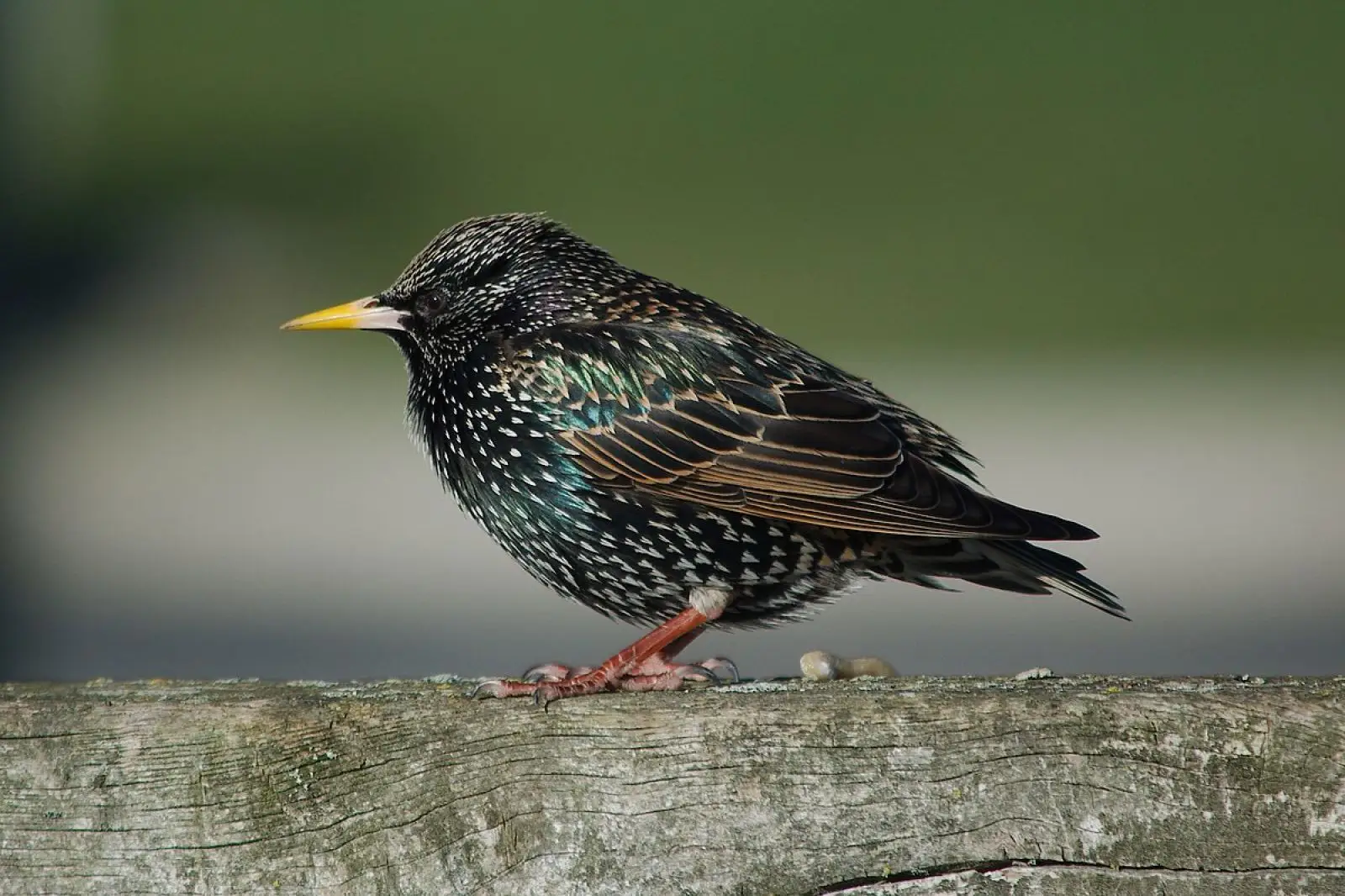Reading Text 5 - The Common Starling

The common starling (Sturnus vulgaris), called the European starling in North America and simply the starling in Great Britain and Ireland, is a medium-sized bird belonging to the starling family, Sturnidae. Measuring about 20 cm (8 inches) in length, it features glossy black feathers with a metallic shine, which become speckled with white during certain seasons. The bird’s legs are pink, and its beak changes color throughout the year, appearing black in winter and yellow in summer. Juvenile starlings have browner feathers compared to adults. Known for its ability to mimic sounds, the common starling has been referenced in literature such as the Mabinogion and the works of Pliny the Elder and William Shakespeare.
There are around 12 subspecies of the common starling, which breed in open areas across temperate regions of Europe and the Palearctic, extending to western Mongolia. It has also been introduced as an invasive species to countries such as Australia, New Zealand, Canada, the United States, Mexico, Argentina, South Africa, and Fiji. In its native range, the bird is a year-round resident in western and southern Europe and southwestern Asia. Populations in the northeast migrate south and west during winter, traveling as far as Iberia and North Africa. Starlings build messy nests in natural or artificial cavities, where they lay four to five pale blue, glossy eggs. These eggs hatch after two weeks, and the chicks stay in the nest for another three weeks. Typically, the species has one or two breeding cycles per year. The common starling has an omnivorous diet, feeding on a variety of invertebrates, seeds, and fruits. It faces predation by various mammals and birds of prey and is a host to numerous internal and external parasites.
The large flocks formed by common starlings can benefit farmers by reducing invertebrate pests. However, these birds can also be problematic, as they sometimes damage fruit crops and sprouting plants. In urban areas, their noisy and messy roosts often become a nuisance. Efforts to control introduced starling populations, such as culling, have been attempted in some regions. While these measures have generally been ineffective, they have succeeded in preventing the species from colonizing Western Australia.
Since the 1980s, the common starling population in parts of northern and western Europe has declined, largely due to a reduction in grassland invertebrates, which are vital for feeding chicks. Nevertheless, the global population remains stable, and the species is classified as “least concern” by the International Union for Conservation of Nature (IUCN).